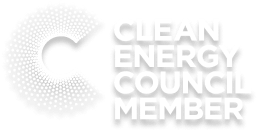Australia, known for its abundant sunshine, has been increasingly turning to renewable energy sources to address its power needs. Among these, solar energy has emerged as a prominent solution, offering vast potential for a sustainable future. The information and communication sector, a significant contributor to Australia’s economy, can greatly benefit from embracing solar power. By leveraging this clean energy source, the sector can enhance its efficiency, reduce environmental impact, and pave the way for a greener digital landscape.
Solar Power: A Pathway to Sustainable Operations
The information and communication sector relies heavily on energy-intensive infrastructures such as data centers, telecommunication networks, and server farms. The integration of solar energy in these operations can lead to several sustainable benefits.
Renewable Power Generation: Solar panels can be installed on rooftops, parking lots, and vacant lands to generate clean electricity. By utilizing this renewable power source, the sector can reduce its dependence on fossil fuels and significantly decrease greenhouse gas emissions.
Energy Cost Reduction: Solar power offers a cost-effective alternative to traditional energy sources. By generating electricity on-site, companies can reduce their reliance on the grid and lower their energy bills. This translates into substantial savings for information and communication businesses.
Grid Independence and Resilience: Solar panels installations, combined with energy storage systems, enable businesses to become more resilient to power outages and disruptions. This grid independence ensures uninterrupted services, even during emergencies, making solar power a reliable solution for the sector.
Empowering Data Centers with Solar Energy
Data centers, the backbone of modern information storage and processing, consume significant amounts of energy. Here’s how solar energy can revolutionize the sector:
Greening Data Centers: By integrating solar panels into data center designs, operators can harness the abundant sunlight to power their operations. This shift to renewable energy reduces carbon footprints and aligns data centers with sustainability goals.
Offsetting Energy Demands: Data centers experience peak energy demands, particularly during daytime hours. Solar power can be instrumental in meeting these high-energy requirements, reducing strain on the electrical grid and promoting load balancing.
Financial Savings: With solar energy, data center operators can significantly cut down on energy expenses. The cost savings achieved can be allocated towards infrastructure improvements, research and development, or other critical areas within the sector.
Advancing Telecommunications with Solar Energy
The telecommunications sector plays a crucial role in connecting people and enabling seamless communication. Here’s how solar power can benefit this sector:
Remote and Rural Connectivity: In remote areas where grid infrastructure is limited, solar-powered telecommunication towers can provide reliable connectivity. Solar energy ensures continuous operation of these towers, extending coverage to underserved regions and bridging the digital divide.
Mobile Charging Stations: Solar-powered charging stations can be set up in public spaces to facilitate smartphone charging, ensuring connectivity even in areas lacking electrical outlets. This approach enhances user experience and accessibility to communication services.
Sustainable Network Operations: Telecom operators can reduce their carbon footprint by adopting solar energy to power their network equipment, base stations, and communication facilities. This move towards sustainability enhances the sector’s environmental credentials.
Encouraging Innovation and Collaboration
To fully realize the potential benefits of solar energy in the information and communication sector, collaborative efforts between government, industry stakeholders, and research institutions are crucial. Here are some key areas that require attention:
Incentive Programs: Governments can introduce incentives, such as tax benefits or grants, to encourage the adoption of solar energy in the sector. These initiatives would promote investment in solar infrastructure and accelerate the transition towards clean energy.
Research and Development: Continued investment in research and development is vital to improve solar technologies, increase efficiency, and reduce costs. Collaborative research projects can lead to innovations that optimize solar power integration within the information and communication sector.
Industry Standards and Best Practices: Establishing industry-wide standards and best practices for solar energy integration ensures consistency, safety, and optimal performance. These guidelines would enable seamless adoption across the sector and facilitate knowledge sharing.
Conclusion
Solar energy represents a game-changing opportunity for Australia’s information and communication sector. By embracing this clean energy source, businesses can achieve sustainability goals, reduce operational costs, and foster a greener digital landscape. With the right incentives, research support, and collaboration, solar-powered data centers, telecommunication networks, and other infrastructure can drive the sector’s evolution towards a more sustainable future. As solar power continues to gain prominence, Australia has the potential to become a global leader in sustainable information and communication practices. Solar Miner is one of the leading solar providers in Victoria, offering customized on grid solar solutions to the businesses and homeowners with premium warranties and unbeatable service support. Get in touch with our team at 1300285885 today to learn more about our latest solar deals.






